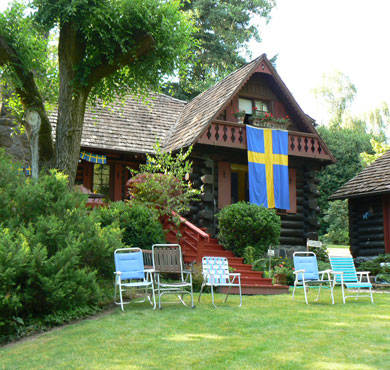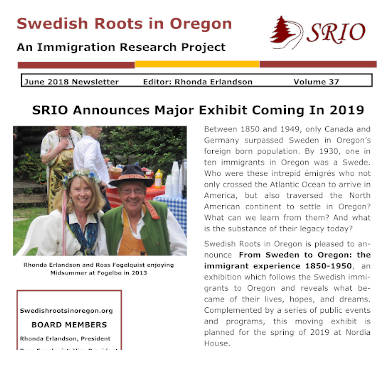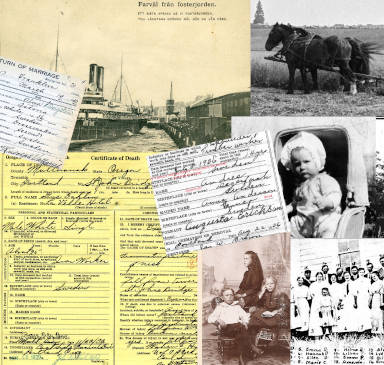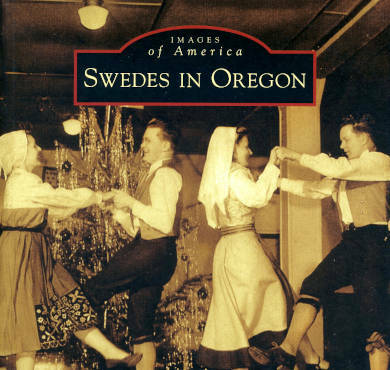About this book
Lars Nordström’s book is based on his interviews with ten Swedes—five men and five women—living in the Northwest for at least ten years. While much has been written about the great Swedish migration to America between 1845 and 1930, little attention has ever been given the smaller numbers that have arrived in recent decades. These oral histories from around the year 2000 give a fascinating, balanced group portrait of representative recent Swedish immigrants in a particular region, describing their backgrounds, way of life, and attitudes toward both the old and new countries. The picture he gives rings true of others like them in other parts of the United States. It thus provides a valuable “macrocosm in microcosm.”
— H. Arnold Barton, Professor Emeritus of History Southern Illinois University Carbondale
As in his prize-winning memoir Making It Home, Lars Nordström’s TEN NEW LIVES invites readers to engage questions about American culture: What does it mean to be an immigrant? How do outsiders negotiate the binational bicultural bilingual divide? What does it mean to be a resident alien? Since 1776, immigrant autobiography has been rich with storied answers. These Swedish immigrants enrich that tradition. Their stories create an illuminating bridge between Sweden and the Pacific Northwest.
—George Venn, General Editor, THE OREGON LITERATURE SERIES
Particularly interesting is how the five men and five women in this sample group demonstrate the ways in which the complexities of causation, experiences in the United States, and identity preservation remain constants as central themes of emigration history.
—Byron J. Nordstrom, Editor of the Swedish-American Historical Quarterly
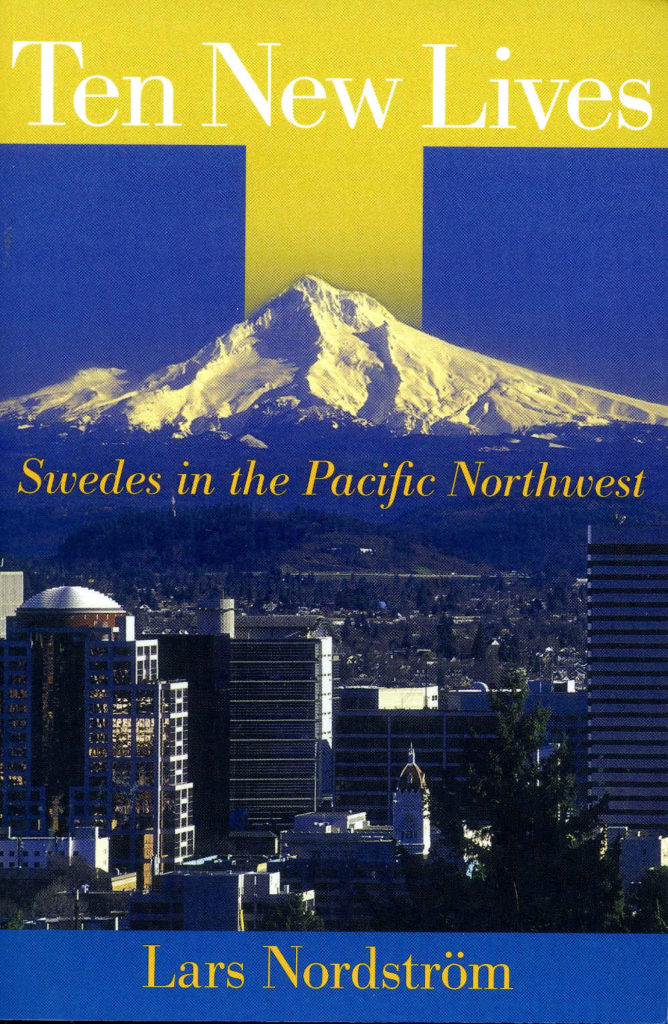
Excerpt from Ten New Lives
In 1997 I published a book entitled Making It Home. It started out as an attempt to describe a year on the farm on which I lived, but grew into something of a memoir when I discovered that my past was in many ways inseparable from my new life in America. I was an immigrant, and my own fate was, I thought, just a strange combination of serendipity and circumstance. But I knew I was an untypical immigrant, having become a grape grower in Oregon on the one hand, and a translator and author on the other. Reading from the book in front of audiences, and answering all kinds of questions about it, made me curious about other Swedish immigrants of my generation. I had tried to explain why I had come, but why had they come? I realized that I did not know why.
To find out I started to make some inquiries. As it turned out, Ernst Skarstedt had written several books, as had Svante Löfgren, but they described Swedes from that first wave of Swedes moving into the Pacific Northwest well over a hundred years ago. I also found a wonderful and informative collection of oral histories in English entitled New Land, New Lives: Scandinavian Immigrants to the Pacific Northwest. It contained 45 relatively short, personal stories told by Scandinavians who had immigrated to the Pacific Northwest between 1900 and 1939. It was exactly what my grandmother and grandfather would have experienced if they had decided to emigrate. It was interesting reading, but at the same time obvious that they spoke of an entirely different reality from that which I had grown up in myself. The Sweden these people had left was not my Sweden, and the America they described was not the United States I had experienced either.
I kept searching, but no matter how hard I looked, I could not find a single book which depicted the life of Swedes in the United States during the last 25 – 30 years. But there were some articles in Swedish and Swedish-American magazines. However, these Swedes had come for completely different reasons. They were primarily sports stars, businessmen, entrepreneurs and different kinds of international celebrities enticed by “the land of opportunity,” and that they had found their way to the United States was perhaps not that surprising. But I sensed that the vast majority were simply “ordinary” individuals. They were integrated into American society, lived in the suburbs like everyone else, had American friends, commuted to work and had children in the local school system. Why had they come here? And why had they stayed? Who had described that group of America-bound emigrants I myself belonged to? Out of this vacuum, the idea for this book was born.
What I was curious about was this: If one lived in a society like the one in Sweden, which offered its citizens a good education, decent jobs and wages, single-payer, universal health care, and social justice, why did they choose to leave? I certainly knew some Swedes in the Pacific Northwest, and I generally knew approximately how long they had lived here, but when I thought about it, I rarely knew the reason why they had moved here.
In order to try to get some answers, I decided to interview Swedes who had settled in the Pacific Northwest following the Vietnam War and let them tell their stories and describe the road that led here. This choice of place was simply the result of the fact that I lived here myself—I already had contacts established and there was a small Swedish colony in existence. Oregon and Washington also constitute an area where Swedes seem to feel at home. Some aspects of the natural environment are reminiscent of that in Sweden, and even though the climate is considerably milder it still has four distinct seasons. It is also an area where a fair number of Swedes settled a hundred years ago, where Swedes (and Scandinavians) have played some role in the history of the states, and where certain Swedish traditions like Midsummer and Lucia are still being celebrated locally. Oregon and Washington are also known to be (at least from an American point of view) relatively liberal and progressive states.
So what are the reasons for leaving one’s homeland? There does not seem to be an easy or simple answer to that question. For most modern emigrants the very word “emigrate” seems too definitive. Few feel like emigrants in the traditional sense, but are much more at ease thinking of themselves as “Swede living abroad.” These Swedes have indeed left Sweden and are permanent residents of the United States, but they have no specific plans for moving back because they have never emigrated! In one way or another, they have just “ended up” in the United States, they live there “for the time being,” and they have decided to “wait and see.” Just as the old emigrants of a hundred years ago, the new emigrants talk of “going home” when they visit Sweden, even though they obviously have both settled and developed family ties in the United States.
The reasons why these Swedes still remain abroad vary. The vast majority live in mixed marriages, and according to these oral histories, the narrators’ American spouses do not seem eager to settle in Sweden. Other reasons emerge if one reads a bit between the lines—the interviewees enjoy their life in the United States; their quality of life is high; and often they feel happier and more open in their new country. Finally, the children obviously play a central role—they grow up as Swedish-Americans, shaped primarily by American culture and American values. For them, due to their identity and language, it is so much easier to continue their education and career in the United States rather than in Sweden.
Who are the individuals telling these stories? I did not try to influence or steer the selection process at all, but started asking people in my nearest circle of friends and then let the rings widen and grow. Ultimately one can argue that it was serendipity that determined the process. Some I knew quite well, and others I had just said hello to at some of the Swedish community gatherings that are occasionally arranged in Portland. Many who were asked to participate declined, and not all the recorded interviews were included in the final selection.
The selection criteria were minimal. The participants should at least have lived in the United States for ten years to be really settled here, and I wanted to balance the participants equally between men and women to make sure that if there were any gender differences, they would be covered. To make our conversation easier, I had assembled four pages of questions that all the interviewees had a week to think about before we sat down to talk. Using these questions as a starting point they got to tell the story of the path that led to the life they now lived. I also asked them to reflect on cultural differences, their relationship to Sweden, their bilingual efforts (especially as far as their children were concerned), new insights and perspectives, drawbacks and advantages, identity and plans for the future. Our conversations usually lasted three to four hours.
People do not speak the way they write, and not everyone is a born storyteller—but one might still be a keen observer and have interesting things to say. Spoken language is full of repetitions, sentences that are never completed, unclear clauses and references, unfinished comparisons, sudden additions, changes in tense, and small grammatical mistakes which one rarely sees in written language. In other words, a conversation that is written down word for word is rarely very easy to read. For this reason, these texts have been edited for readability, and this work might best be described as walking a tightrope. I have tried to strive for fluency and smoothness in the narrative while preserving the content and the individual voice. In some instances almost half of the original conversation has been cut, passages have been moved around for the sake of unity, and the questions have been eliminated so that the dialogue has been transformed into a narrative in the first person. Following my editorial work on the text, some chose not to touch the text at all, whereas others combed through their stories once or even twice, something an observant reader might notice. All the interviewees have, in other words, always been provided the opportunity to get the last word in their stories, and the end result is always the narrator’s own story, not mine.
A conversation describing an individual’s personal story also always becomes, to a certain extent, a portrait of a specific time. One should therefore keep in mind that all these conversations (with one exception) were recorded in the United States in the years around the millennium. They were recorded before Sweden changed its law and made dual citizenship possible, before the terrorist attacks on September 11, and during a period that has been called “the longest economic boom in US history.” In contrast, the Swedish 1990s are usually described as something of a decade-long crisis.
My intent has not been to try to prove one thing or another, or to make a certain argument, but simply to try—as openly and fully as possible—to illuminate different aspects of Swedes living abroad as well as their view of Sweden and the United States. In a time when an increasing number of people create new lives for themselves in foreign cultures, it my hope that these oral histories can provide a better understanding of what it means to be an immigrant in a foreign culture—wherever one comes from, and wherever one settles down.
Lars Nordström,
Beavercreek, Oregon, November 2010
The period in Swedish history from 1850 to 1925 is known as the “Great Migration.” During this time some 1.2 million Swedes—about 20% of the entire population—left their native country. The vast majority came to the United States and vibrant Swedish immigrant communities—as well as a wide-spread Swedish-language press—soon emerged all over America. Eventually, after a number of increasingly restrictive US immigration laws (popularly known as “the quota laws”) had been passed in the 1920s, Swedish immigration to the United States slowed considerably. A few years later, following the crash on Wall Street and the beginning of the Great Depression, the 1930s became a decade of re-migration. Every year, more Swedes returned home than came to the United States. At its peak, re-migration was ten times as large as immigration. During World War II, very few people moved in either direction.
Following World War II, immigration from Sweden to the United States never gained the same momentum again. Having remained neutral and unscathed during the war, Sweden was in a position to supply Europe in the huge rebuilding effort that followed. As exports transformed Sweden into an increasingly prosperous country with very low unemployment, the need to emigrate became much less urgent. The once great flow of emigrants was reduced to a trickle. Since the end of World War II, an average of 1,500 to 2,000 Swedish nationals have found their way to the United States. Over time, the number of Swedish-born in the United States has steadily shrunk—just since 1970, their number has gone down by over 60 percent.
Have Swedes stopped emigrating? No, not really. Today the international organization Svenskar i Världen [Swedes around the World], estimates that there are somewhere between 300,000 and 400,000 Swedes—out of a total population of 9 million—living outside their native country. (Students, au pairs, and temporary project workers are not included.) Of these 300,000 to 400,000, approximately 50,000 live in the United States. That the number is somewhat nebulous depends, among other things, on the fact that no Swedish government agency keeps track of Swedes living abroad. In addition, the definition of the word “Swedish” is somewhat amorphous. Many have emigrated as children in families and some have perhaps neither preserved their native language nor an active contact with Sweden, and might therefore not correspond to what we initially think of when we use the expression “Swedish emigrant.” All figures about the exact number of Swedes living abroad will therefore always be more or less qualified guesswork.
For a number of complex reasons, the United States is no longer the obvious destination it once was. Since 1972, Norway has actually been the most popular destination for Swedish emigrants. The Nordic countries allow their citizens to move and work freely in each other’s countries; its geographical proximity makes going home cheap, fast and easy; language and culture are very similar; and Norway has become a very wealthy country that pays good salaries. Some 60,000 Swedes now live and work in Oslo alone. Furthermore, because of the European Union, which Sweden joined in 1995, it is now possible to live and work in a number of European countries without having to obtain a visa first. Many Swedes have found their way to the UK, and it is estimated that London also has a population of approximately 60,000 Swedes. Today there might be more Swedes living in Spain as well—at least during the winter months—than in the United States. Fairly large numbers of Swedes are now also settled in Germany, Belgium, Asia, and Australia.
As these population statistics suggest, the Swedish immigrant experience in the United States has changed radically in a hundred years. Around 1910, when the US population had reached 91 million, there were between 1.2 or 1.3 million Swedes in America. Therefore, the 50,000 Swedes living in the US today only constitute a tiny fraction of the earlier emigrant population—less than four percent of the number of Swedes who lived in America a hundred years ago. At the same time the US population has grown more than three-fold and is now over 300 million. Of these, more than 31 million are born abroad. The Swedes thus only make up 0.17 percent of the foreign born population, or 0.017 percent of the entire US population, and their presence in American culture is more or less on a “molecular” level. In short, there are very few Swedes walking on the streets of America today, and random encounters are rare indeed.
On the other hand there are, according to information in the latest US Census, well over four million individuals in the USA who consider themselves Swedish-American, and who nurture the Swedish heritage of the early immigrants to the USA. These individuals keep a fairly large number of organizations, lodges, festivals, congregations and museums alive, but they involve activities (perhaps with the exception of genealogists) that rarely translate into a deep, continuous contact with Sweden. To most Swedes who have immigrated to the United States as adults during the last thirty years, these Swedish-Americans often appear considerably more American than Swedish. Less than one percent speak Swedish; few could say what political party currently rules in Sweden; most have not developed a nuanced view of modern Sweden (or Europe), and often express political (size and role of the government), religious (church involvement), or moral (death penalty and abortion) values that are uncommon in today’s Sweden. For these reasons, the new Swedish immigrants often turn to the internet and to their own local networks and groups where the members share a more similar background, experiences and language. Consequently the Swedish-Americans and the Swedes have different needs and interests, and do not—at least not to any great extent—mingle in the same organizations and groups.
